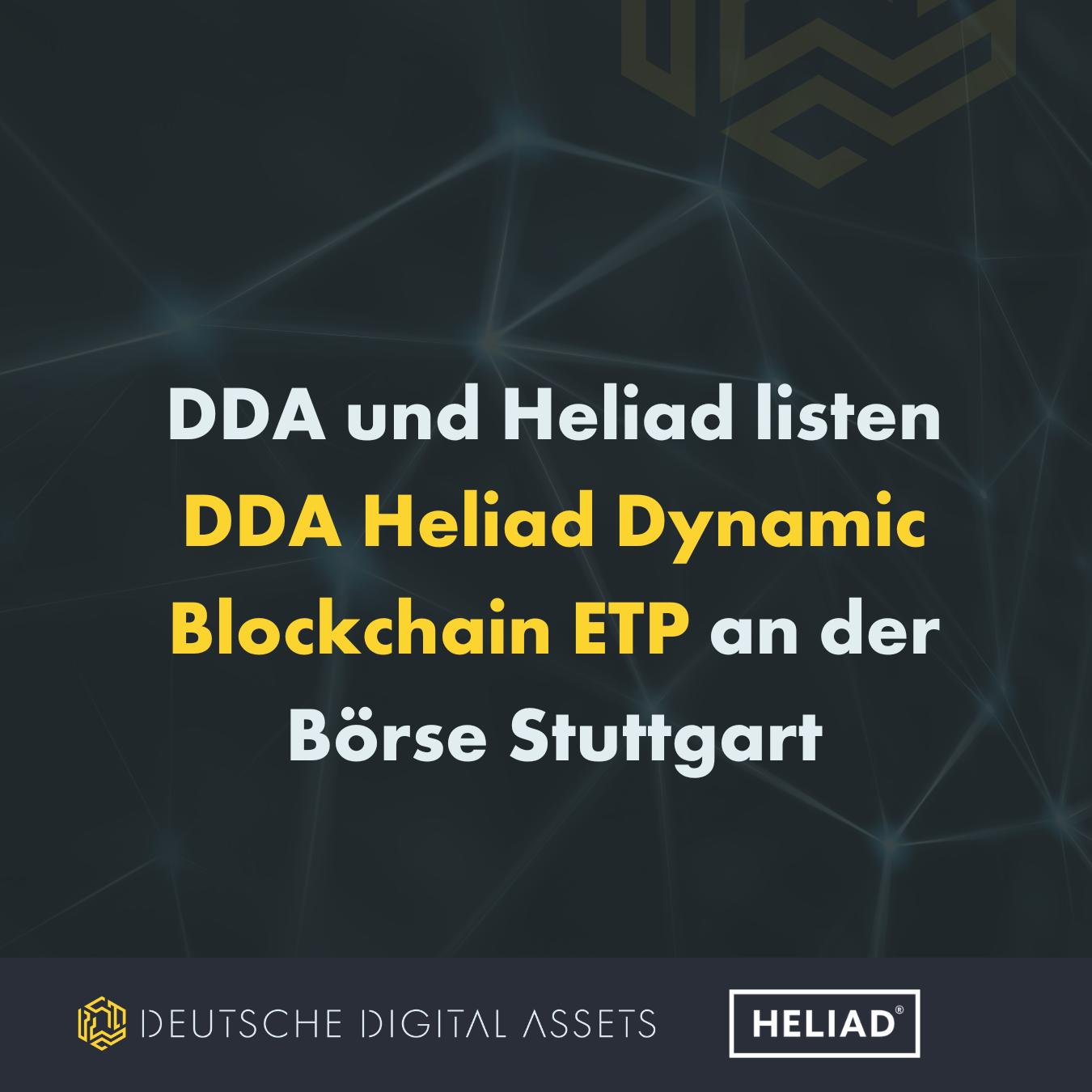Von Eleanor Haas, Gesellschafterin der Iconic Holding, Krypto/Blockchain-Kommentatorin, Beraterin von Innovatoren und Astia Angels sowie Direktorin des Keiretsu Forum Mid-Atlantic

Als die Kryptowährungen abstürzten, die ICOs weitgehend verschwanden und der frühe Krypto-/Blockchain-Markt mittellos erschien, nahmen viele Leute an, dass die Blockchain-Geschichte vorbei sei. Aber raten Sie mal, was, die Hauptgeschichte hatte sich die ganze Zeit unter dem Radar entwickelt! Ein Teil dieser Geschichte ist die Flucht in die Qualität von Kryptowährungen - besprochen in Kann Krypto-Spring weit zurückliegen. Aber ein großer Teil sind die transformativen Blockchain-Pilotprojekte und die Zusammenarbeit von Unternehmen und Blockchain-Start-ups. Erwachsene als Retter? Nein, im Gegenteil. Es ist eine zweiseitige Straße mit Herausforderungen und Fortschritten auf beiden Seiten.
Herausforderungen und Fortschritte
Die Einführung der Blockchain-Technologie durch etablierte Einrichtungen - insbesondere Unternehmen und souveräne Staaten - erfolgt nur langsam. Und warum? Die Angst vor dem Scheitern aus vielen Gründen, darunter:
- Unausgereifte Technologien und Protokolle.
- Fehlen eines soliden Geschäftsmodells für die Einführung.
- Keine effektive Ausführung von Anwendungsfällen aufgrund des fehlenden Ökosystems. Zusammenarbeit der Akteure.
- Regulatorische Unsicherheit.
Jetzt beginnen einige Unternehmen, sich nicht mehr nur darauf zu konzentrieren, wie die Technologie mit bestehenden Prozessen funktionieren könnte, sondern wie sie echte Anwendungsfälle in großem Maßstab umsetzen können. Noch wichtiger ist, dass immer mehr Menschen die Technologie als wertvolles und vertrauenswürdiges Instrument betrachten und dass souveräne Staaten ernsthaft darüber nachdenken, wie sie von ihren eigenen digitalen Währungen profitieren könnten.
Akzeptanz in der Theorie. Enttäuschung in der Praxis.
Deloittes globale Blockchain-Umfrage 2018- die im August letzten Jahres veröffentlicht wurde, ergab, dass von den 1.053 befragten Blockchain-erfahrenen Führungskräften 74 Prozent angaben, dass ihre Unternehmen einen "überzeugenden Business Case" für den Einsatz der Blockchain-Technologie sehen.
Angesichts dieser Erkenntnisse ist es nicht überraschend, dass 2018 das Jahr der Blockchain-Pilotprojekte und Proof-of-Concept-Projekte für Unternehmen wurde. Leider sind viele von ihnen gescheitert. Laut Avivah Litan, VP und Distinguished Analyst bei Gartner, ist auch dies nicht überraschend:
"Schon Anfang 2018 haben wir gesagt: 99% der Unternehmensprojekte sind eine Sackgasse; 99% brauchen die Technologie nicht; sie kommen nicht aus dem Labor heraus. Sie sind ein Ergebnis der Angst der CEOs, etwas zu verpassen - das FOMO-Phänomen", sagte sie. Mit anderen Worten: Blockchain ist ein Blindgänger.
Grund zur Hoffnung
Ah, aber mit Blockchain gibt es immer Jede Sichtweise hat zwei Seiten! Trotz gescheiterter Pilotprojekte scheint die Blockchain immer noch lebendig zu sein und sowohl auf Startup- als auch auf Unternehmens- und Staatsebene zu leben - und auf dem Weg zur Normalität!
Mike Orcutt, stellvertretender Redakteur, MIT Technology Review, gibt uns drei Gründe warum 2019 "das Jahr sein wird, in dem die Blockchain-Technologie endlich normal wird".
1. Große Pläne von Walmart - und der Wall Street.
Von WalmartEinführung eines Pilotprojekts, an dem bereits seit mehreren Jahren gearbeitet wird: ein System zur Rückverfolgung von Lebensmitteln, das die Ausbreitung und die Auswirkungen lebensmittelbedingter Infektionen verringern und entdeckte Kontaminationsfälle zurückverfolgen und eindämmen soll.
An dem Food Trust genannten Tracker sind Walmart und neun Unternehmen (Nestlé SA, Dole Food Co., Driscoll's Inc., Golden State Foods, Kroger Co., McCormick and Co., McLane Co., Tyson Foods Inc. und Unilever NV) in Partnerschaft mit IBM beteiligt.
An der Wall Street werden zwei große Marken Kryptowährungsdienste einführen: Bakkteine Börse für digitale Vermögenswerte von Intercontinental Exchange (ICE), dem Eigentümer der New Yorker Börse, und dringend benötigte Verwahrungsdienste für Krypto-Vermögenswerte von Fidelity Investments über ein neues Unternehmen, Fidelity Digital Assets.
2. Intelligente Verträge werden endlich für etwas in der realen Welt gut sein. Eine dreifache Partnerschaft wird Flugversicherungen ermöglichen, die automatisch in Kryptowährung auszahlen, wenn Ihr Flug gestrichen wird. Möglich wird dies durch zuverlässige, einfach zu verwendende intelligente Verträge.
Wie beim Walmart-Tracker handelt es sich auch bei der Flugversicherungsanwendung um eine Zusammenarbeit zwischen einem Start-up, einem Projekt und einer Risikofirma im Spätstadium: Kettengliedwird das erste zuverlässige System für die sichere Einspeisung von Daten in intelligente Verträge schaffen; OpenLaw, ein Projekt der Harvard Law School, das modelliert einfache rechtliche Vereinbarungen auf der Grundlage intelligenter Verträge, und Anwalt für Raketenrecht, einem seit 10 Jahren bestehenden kostengünstigen Online-Rechtsdienst für Privatpersonen und kleine Unternehmen.
3. Die Zentralbanken von mindestens 15 Ländern denken über folgende Maßnahmen nach staatlich gestützte digitale Währungen. Solche Währungen werden wahrscheinlich einen Halo-Effekt der Seriosität für andere Kryptowährungen und verwandte Technologien schaffen.
Der anhaltende Rückgang der Bargeldnutzung in der ganzen Welt führt dazu, dass die Banken einen Vertrauensverlust in die nationalen Währungssysteme vermeiden müssen. Durch die ständige Verbesserung neuer Zahlungstechnologien und Kryptowährungen werden staatlich gedeckte digitale Währungen technisch immer realistischer. Und von solchen Währungen würden die Banken profitieren. Nach Ansicht der Christine Lagardedem Chef des Internationalen Währungsfonds, könnten sie den Zentralbanken dabei helfen, Hunderte Millionen von Menschen zu erreichen, die keine Bankverbindung haben, und mehr Sicherheit, Privatsphäre und Verbraucherschutz bieten.
Drei Unternehmensstrategien sind vielversprechend
Da die Akzeptanz in den Unternehmen wächst, entwickeln die teilnehmenden Unternehmen interessante Strategien. Hier sind Beispiele von drei großen Marken:
1. Ernst & Younghat einen Technologie-Prototyp vorgestellt, der es Unternehmen erstmals ermöglicht, privat und sicher Produkt- und Dienstleistungs-Token auf einer öffentlichen Blockchain mit privatem Zugang zu ihren Transaktionsdaten zu erstellen und zu verkaufen. Der Prototyp soll 2019 in Betrieb genommen werden.
Dies ist ein großer Schritt zur Senkung der Hürden für eine breitere Akzeptanz der Blockchain in Unternehmen. Derzeit können Unternehmen nur private oder zugelassene Blockchains verwenden, wenn Datenschutz erforderlich ist. Dies ist zeitaufwändig und teuer. Darüber hinaus bieten öffentliche Blockchains dank ihrer Dezentralisierung in der Regel eine bessere Sicherheit und Liquidität. Die EY Ops Chain Public Edition (PE) bietet das Beste von beidem.
2. Kodak hat seinen Namen lizenziert für die Verwendung als KODAKOneKODAKOne, eine Blockchain-gestützte Plattform für Fotografen, die ihr eigenes Bildmanagement kontrollieren und einen Marktplatz haben wollen, und KODAKCoin, ein Unternehmenscoin, der Kunden durch Belohnung von Loyalität und dem Unternehmen durch Kostensenkung und Steigerung der Kundenattraktivität zugutekommen soll. KODAKOne befindet sich in der Beta-Phase.
Die Strategie kommt von ICOxein börsennotiertes Unternehmen (gehandelt an der OTCQB), das Partnerschaften mit etablierten Marken eingeht, um Probleme durch Joint Ventures zu lösen, die Blockchain-Wirtschaften einführen und entwickeln. Dies ist an sich schon eine innovative Strategie. Der Slogan des Unternehmens lautet "Creating Economies" (Wirtschaft schaffen), und das Unternehmen beschreibt seine Tätigkeit als Entwurf und Schaffung von "Blockchain-Ökonomien für etablierte Unternehmen, damit diese von Blockchain-Technologien und Marken-Kryptowährungen profitieren und ihr Geschäft ausbauen können."
3. IBM ist wahrscheinlich das №1 Unternehmen, das Blockchain-Projekte durchführt und aktive Blockchain-Business-Netzwerke startet - mehr als 500!
Blockchain-Projekte auf Unternehmensebene erfordern Zusammenarbeit, und IBM hat den Wert der Zusammenarbeit mit qualifizierten Start-ups bei der Einführung und Skalierung von Blockchain-Netzwerken erkannt. Um dies zu nutzen, geht IBM eine Partnerschaft mit der Columbia University ein, um zwei Blockchain-Beschleuniger als Schlüsselkomponenten des Columbia-IBM-Zentrums für Blockchain und Datentransparenz.
Der IBM Blockchain Accelerator richtet sich an Wachstumsunternehmen in der Spätphase weltweit, die sich auf den Aufbau eines Unternehmensnetzwerks und einer Kundenbasis für ihre Anwendung konzentrieren.
Der Columbia Blockchain Launch Accelerator ist für Unternehmen in der Vorgründungsphase gedacht, die mit der Columbia oder einer anderen Universität in New York City verbunden sind. Die Gründer erhalten Tools und Schulungen zum Aufbau eines Blockchain-Startups.
Beide Programme bieten Unternehmen Zugang zu Technologien und Dienstleistungen im Wert von etwa $400K pro Unternehmen. Weder IBM noch Columbia verlangen Eigenkapital oder eine Gebühr.
Auf dem Weg nach morgen
Alles, was mit Blockchain zu tun hat, ist immer in Bewegung, und wer weiß, was daraus wird, wenn wir zurückblicken. Aber im Moment sieht es so aus, als würde die Zukunft der Blockchain-/Krypto-Entwicklung mit weniger Hype, realistischeren Erwartungen und einem Anschein von Normalität aussehen.
Nach Ansicht von Orcutt:
"Im Jahr 2017 war die Blockchain-Technologie eine Revolution, die das globale Finanzsystem auf den Kopf stellen sollte."
" Im Jahr 2018 war es eine Enttäuschung."
"Im Jahr 2019 wird es alltäglich werden."
"Nach dem großen Krypto-Bullenlauf von 2017 und dem monumentalen Crash von 2018 wird die Blockchain-Technologie 2019 nicht so viel Lärm machen."
"Aber es wird nützlicher werden."















